What is something fun to eat but in the summer time can be super messy? Popsicles!
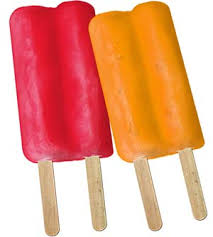
When you’re a kid, there is nothing better on a hot day than to eat a popsicle. The twin pops were fun because they had two sticks so you could share. Breaking them in half was part of the fun!
Have any idea what math card game I am going to share? Hint: it has to do with breaking things in equal parts…..
Before I get to the game, I would like to share my testimony on understanding the importance of playing the games.
One of my boys was in Level G and the other one was finishing up Level E when I decided that they both could use some additional work on fractions. I remember working on fractions in the 6th or 7th grade and having no idea what we were doing, but being able to find the answer because I could follow the formula. I know that my boys already had a good foundation on fractions and understood fractions way more than I did at their ages, but I also knew they needed a bit more to make it stick.
My dilemma…. what could I “supplement” to help them with their fractions? So I started researching. Now, what’s funny about all this is that I had been using RightStart since my boys started math in Level B. It wasn’t until I was working for RightStart at a homeschool conference that I picked up the Math Card Game book. You’d think I would be more familiar with the games since I used the curriculum. WRONG! I only played the games that were in the first edition lessons (the second edition wasn’t out yet). In the first edition, all the directions for the games were in the lesson so I had no need to go to the game book. I really was clueless to how important the games were.
This particular convention was very slow. I don’t like to just sit at the table looking bored, so I opened up the Math Card Game book and started browsing. I was especially interested in the games for fractions. Wow! I was not expecting what I found. There were fraction games for all the areas I wanted my boys to get more practice with! I didn’t even need to buy anything, I only had to use what I already had. It was a total win-win.
That following school year we started it off with about six weeks of playing fraction games. That’s ALL they did for math during those six weeks. My boys really excelled at fractions after our weeks of game playing. I played the games with them and MY understanding of fractions improved. I also saw the importance of playing the games. Amazing!
One of the games we really liked was One Half, game F8 in the Math Card Games book. The objective for this game is to practice adding and subtracting fractions. You use all the fraction cards except for the 1/2s. Make sure to mix them up well.
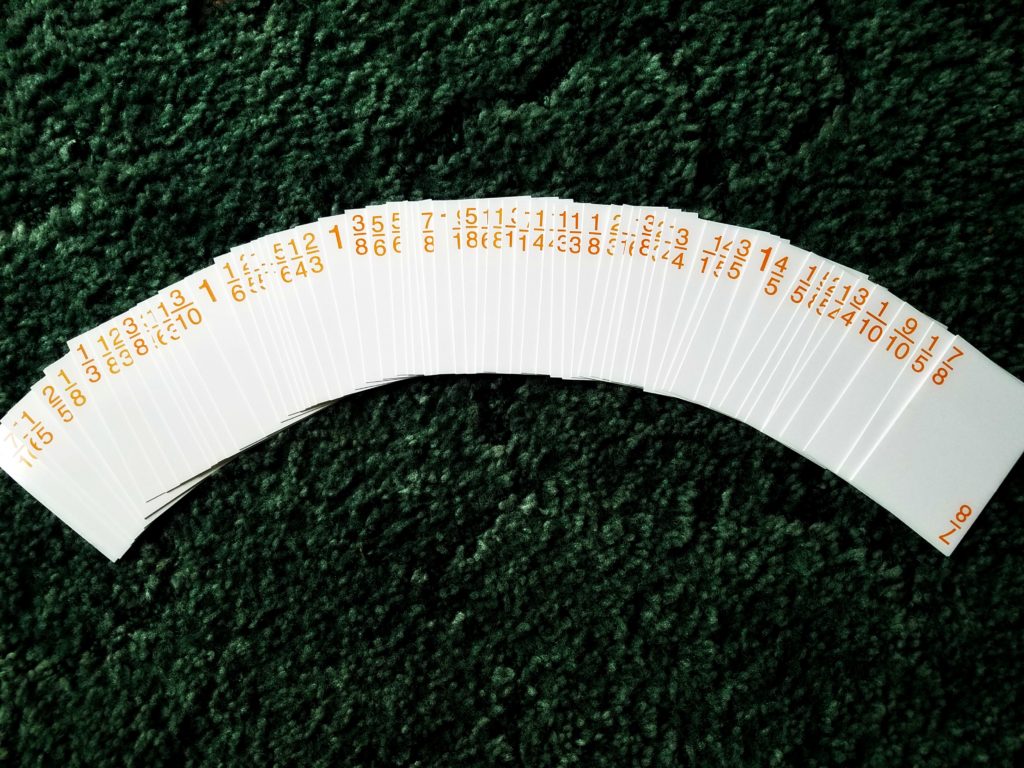
Yes, you are to include the 1s.
Let the child use the fraction chart when needed.
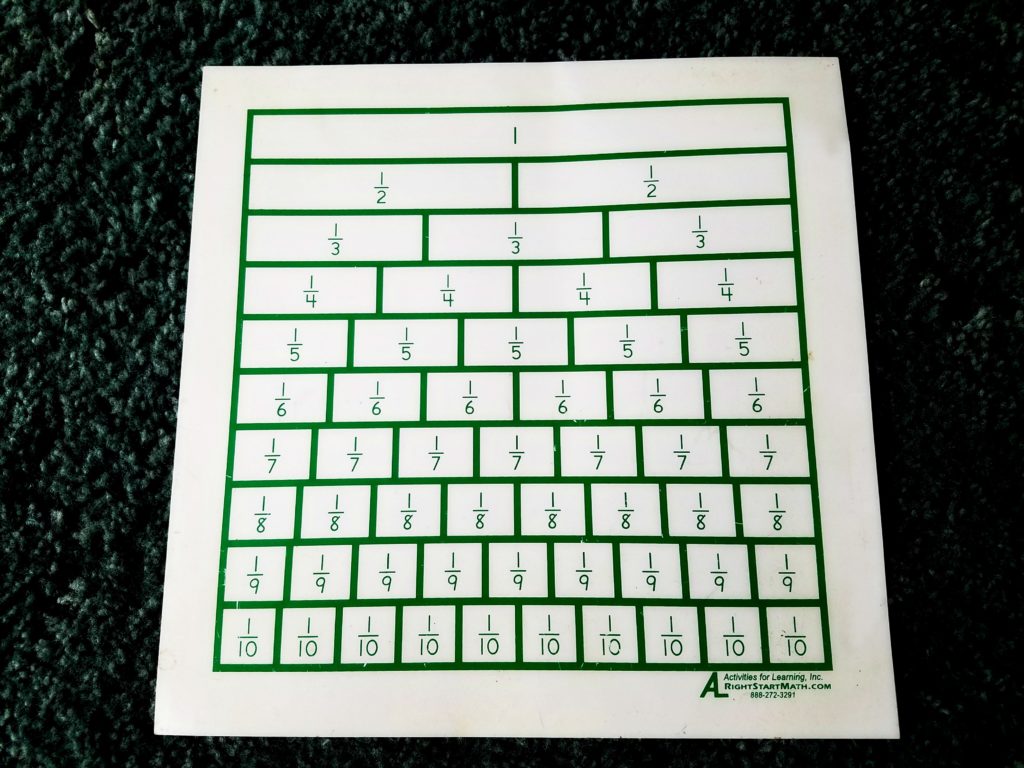
Each player gets four cards. Although I am showing you the players’ cards, they don’t show them to each other. The remaining cards form the stock.
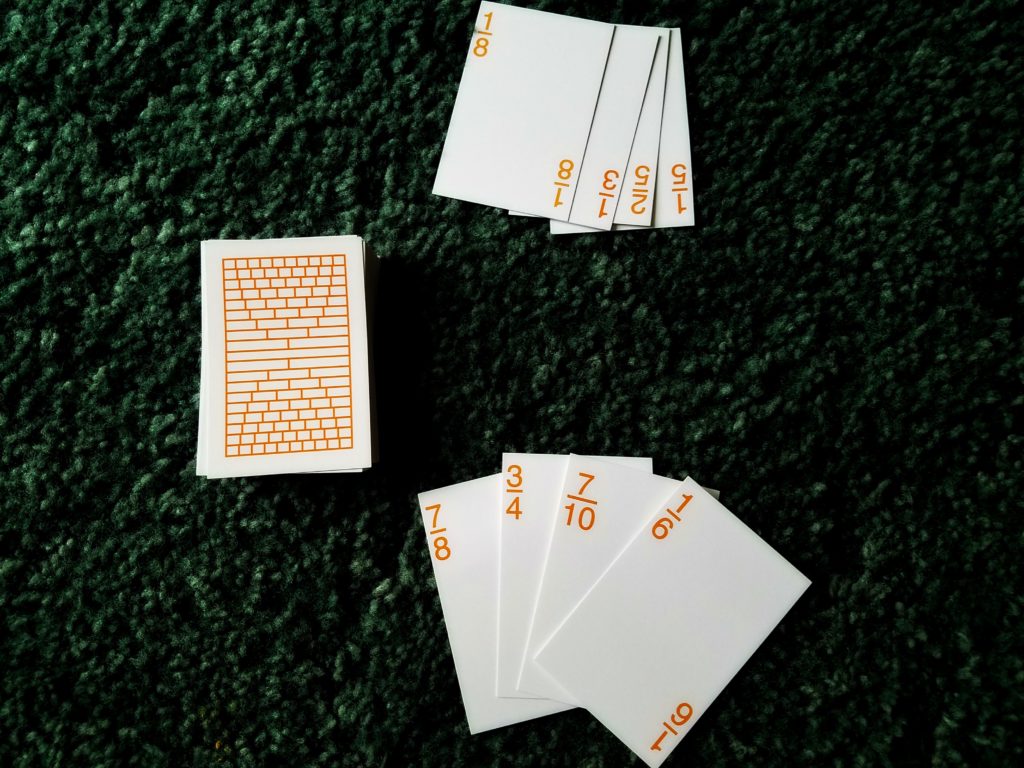
After each turn, the players will take one card from the stock so they always have four cards in their hands.
The goal is to collect the most cards by laying down the card that makes the row equal one half. Now, if your children are like my children and they really want the points, they will not be satisfied with laying down two or three cards. Oh, no! Sometimes they will lay down so many cards that I need to write it down to keep track. They almost make it a game in itself to see how long a row they can get.
The first player starts a row by placing a card face up on the table.
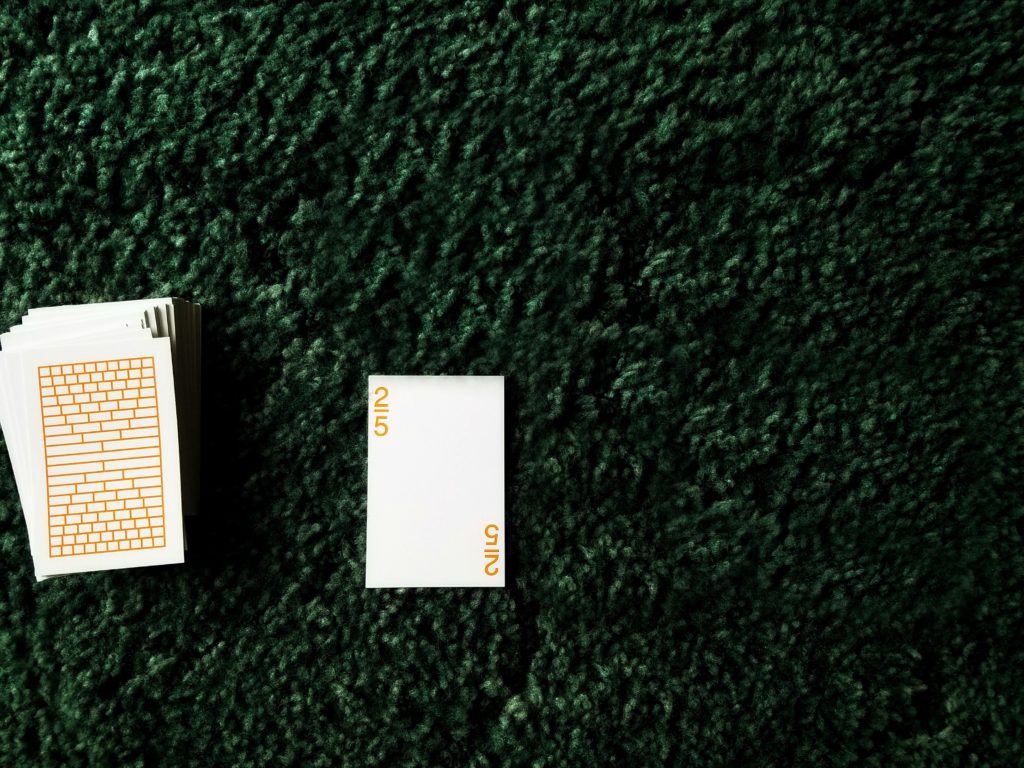
The next player can either play a card on that row to get it to add up to one half or they can start a new row. Here he started a new row by adding the 7/8 card.
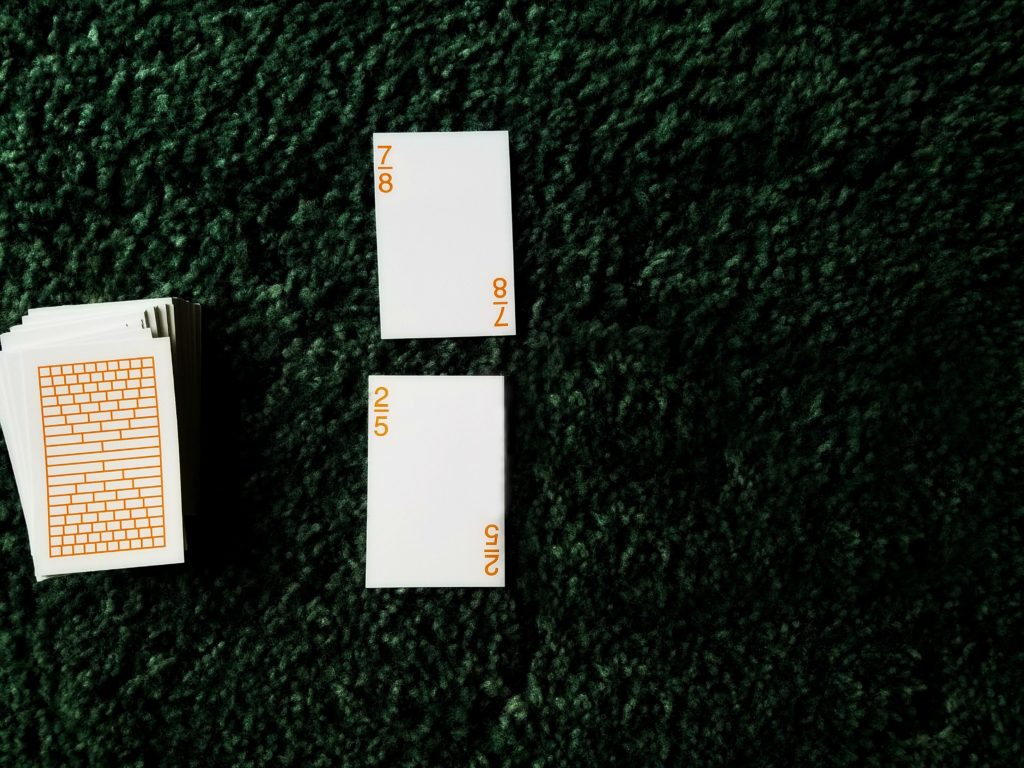
Subtraction is shown by laying the card sideways, like the 1/5 here. Play continues on the rows until the cards added and subtracted equal one half.
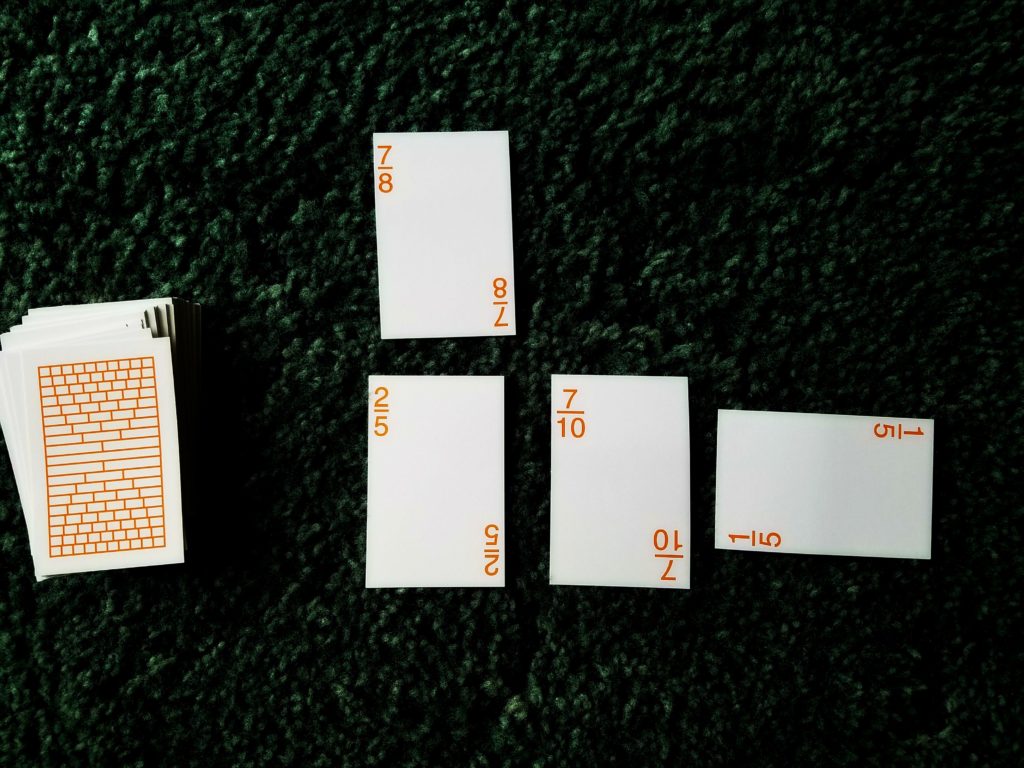
The player that plays the last card to make a row equal to one half gets to collect all the cards in that row. Look at the bottom row. What’s 2/3 minus 1/6? If you’re not sure, check the fraction chart!
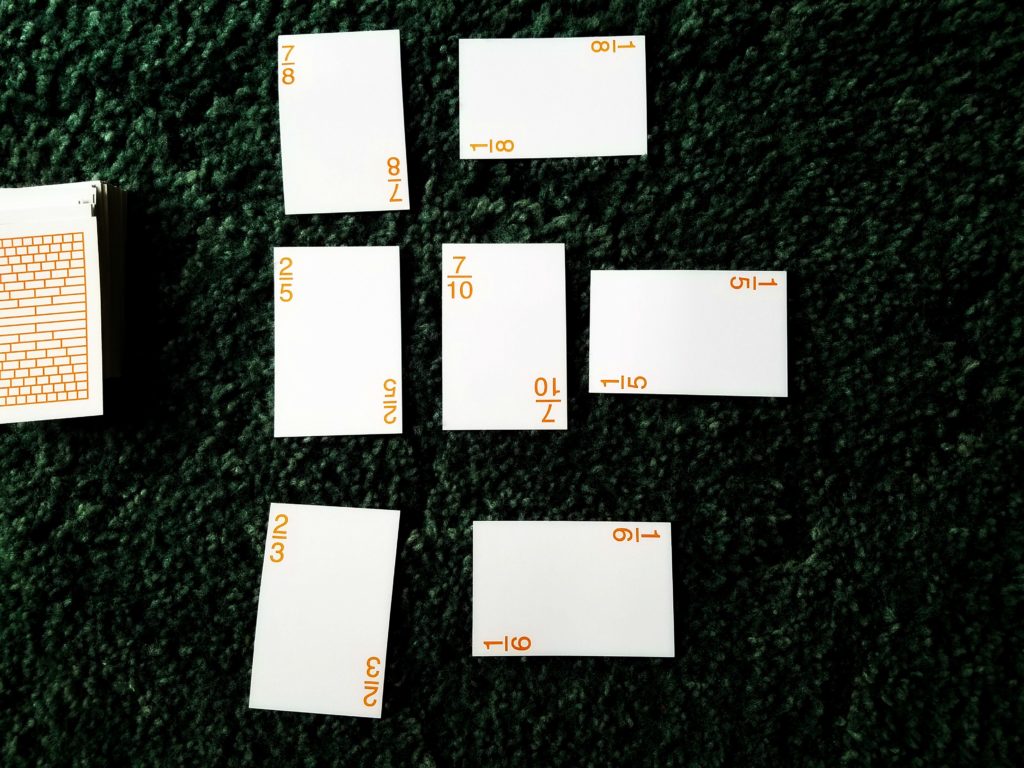
Play continues along. Now look at the top row. What’s 7/8 – 1/8 – 3/8 + 1/8? This can be approached a number of different ways. You could add the 7/8 and the 1/8 to get 1, then subtract the 1/8 and 3/8. Or you may realize the added 1/8 and subtracted 1/8 “cancel” each other out, leaving 7/8 minus 3/8. Again, check the fraction chart when needed.

Remember, ten to fifteen minutes of playing a math card game is equivalent to doing a worksheet. So you can play this game for 15 minutes and consider a worksheet completed. Or keep playing until all possible cards have been played. Some rows will not be completed.
For beginners let them add to one, rather than one half. Use either all the same denominations or with equivalent fractions, depending on their skill level.
For children with learning differences you may want to have them use the individual fraction pieces from the fraction chart to track their rows. Put the 1/2 piece on the top, as that is their goal. When they lay down a 7/8 card, they would then get seven of the 1/8s fraction pieces and lay them in a row underneath the 1/2. This is another visual for them to evaluate what they need to do to reach their goal. They can still refer to the intact fraction chart and that may be all that they need to use. The individual pieces just give another way to help the student gain understanding.
Let us know how this goes for your children!
